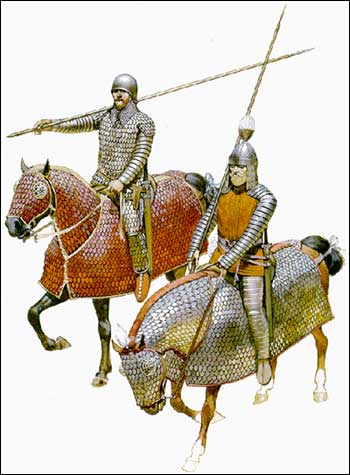I based my view on information from the Battle of Argincourt, where it was written a French knight and his horse got impaled through and through, IIRC.
So, I decided to do some basic checking around, and I did see this:
Gerald of Wales said:
[I ]n the war against the Welsh, one of the men of arms was struck by an arrow shot at him by a Welshman. It went right through his thigh, high up, where it was protected inside and outside the leg by his iron
chausses, and then through the skirt of his leather tunic; next it penetrated that part of the saddle which is called the alva or seat; and finally it lodged in his horse, driving so deep that it killed the animal.
Naturally, it's from
Wikipedia, so I decided to chase down the original text, which has a slightly different
story:
Gerald of Wales said:
... William de Braose also testifies that one of his soldiers, in a conflict with the Welsh, was wounded by an arrow, which passed through his thigh and the armour with which it was cased on both sides, and, through that part of the saddle which is called the alva, mortally wounded the horse. Another soldier had his hip, equally sheathed in armour, penetrated by an arrow quite to the saddle, and on turning his horse round, received a similar wound on the opposite hip, which fixed him on both sides of his seat. ...
In particular, 'killed' becomes 'mortally wounded', which does actually have a different meaning. Gerald goes on to claim that these Welsh bows have pretty awful range.
As for the veracity of the claim - tests done with very powerful bows at point-blank range
can penetrate chain, but then have trouble with the padding underneath. I find the claim of being able to penetrate not one, but
two layers of armor (technically
four) and the 4+ inches of thigh on the soldier,
and his saddle
and then penetrating the horse to a significant degree ... look, most people call skydiving without a parachute suicide. Just because Bear Grylls
once survived a 1600-foot fall doesn't mean you should claim that humans can jump out of planes and survive.
More to the point: at Crecy, at Agincourt, at Poitiers - all the battles famed for demonstrating the power of the longbow -
the French still closed the gap. At
Poitiers:
Next the Dauphin attacked Salisbury and pressed his advance in spite of heavy fire by the English archers and complications of running into the retreating vanguard of Clermont's force. Green suggest that the Dauphin had about 4000 troops with him in this phase of the attack. He advanced to the English lines but ultimately fell back. The French were unable to penetrate the protective hedge the English were using. This phase of the attack lasted about two hours and the positions are shown in the map above on the left.
Four thousand men make an assault, under arrow fire, and aren't immediately slaughtered by archers. In fact, they
make it to the English lines and engage in melee! If we took you as even
vaguely correct, a hundred archers would be able to shatter that attack with ease.
Trained archers kept numerous arrows in the air simultaneously. Even on the low-end where they could only keep two or three airborne at the same time, a small formation of just fifty men with a quiver of just twenty-five each, as an example? Hailstorm.
Look,
I can keep a couple arrows in the air at once, and I'm nowhere near a trained archer. This claim doesn't say
anything useful. A claim that
is useful is the one for rate of fire:
A typical military longbow archer would be provided with between 60 and 72 arrows at the time of battle. Most archers would not shoot arrows at maximum rate, as it would exhaust even the most experienced man. "With the heaviest bows [a modern war bow archer] does not like to try for more than six a minute."
...
In tests against a moving target simulating a galloping knight[35] it took some approximately seven seconds to draw, aim and loose an armour-piercing heavy arrow using a replica war bow.
That's from Wikipedia, of course. Here's something else:
Barnabe Rich said:
But let it be that one thowsand Archers and one thowsande shot should meete in the playne feelde where no vantage were to be taken by the ground, & admit they were ioyned in skirmish, within .viii or .ix score where the Archer is able to shutte twice to the others once, wherby the Arrowes comming so thick amonst them, wil so astone them that the contrarye part shall not well know where at to shoote.
Barnabe Rich was a 16th-century soldier, and his opinion here is that an archer would get about twice as many shots as an harquebusier - again, around six arrows per minute, given that reloading an
arquebus would take a good twenty seconds.
So, yeah, the idea that Longbows = Instant Win against the Romans is something that has ... basically no real substance behind it.


